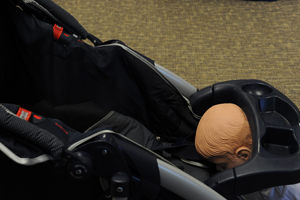 In July and early August, millions of American eyes will be on the pool. How will top U.S. swimmers Michael Phelps and Ryan Lochte do in London?
In July and early August, millions of American eyes will be on the pool. How will top U.S. swimmers Michael Phelps and Ryan Lochte do in London?
Many Americans, both in the African-American community and elsewhere, are particularly excited about Cullen Jones and Lia Neal. Ebony Magazine calls Jones and Neal “two young Olympians poised to change what they say about African-Americans and swimming.”
Olympic swimmers, and even kids who compete in neighborhood swimming competitions, make the sport look so easy. We hope the Olympics is a conversation starter in your home as the Olympians inspire your children to learn how to swim. Do your best to teach your children not to fear the water. Pass on safety and fun at the same time. (See NBC’s Rock Center story on the importance of swimming.)
At home, we, as a nation, need more eyes on our much less experienced swimmers. All Olympic swimmers, from Jones to Phelps, from Neal to Lochte, have one thing in common with every child. At one time in their lives they didn’t know how to swim.
According to news reports, when Jones was 5 years old, he nearly drowned at a water park. (Source: Good Morning America/ABC) That’s when Jones started swimming lessons.
Lessons. They are a simple step that saves lives. They will help teach your child a life-saving skill: How to be safe around water. Use the Olympics as a conversation starter with your child about starting swimming lessons.
Between Memorial Day and July 17, at least 90 children younger than 15 were reported by media to have drowned in swimming pools. Another 106 children were sent to emergency rooms for nearly drowning. That’s about 2 children who died each day during that period.
Drowning is the leading cause of injury death for children ages 1 to 4. African-American children and young adults ages 5 to 19 die from drowning 6 times more often than their white peers, according to the Centers for Disease Control and Prevention. And a USA Swimming/University of Memphis survey says that 70 percent of African-American and 60 percent of Hispanic/Latino children can’t swim.
- Stay within arm’s reach of children and non-swimmers at all times in and around the pool.
- Keep eyes on young children.
- Fence your pool with self-closing or self-latching gates.
- Assign a water watcher.
- Learn CPR.
- If a child is missing, check the pool first.
This week, pools and waterparks around the country are holding Pool Safely Days to help spread this message of safety. You can help, too. Post these buttons, badges and widget on your blogs, Facebook pages and websites. Put Pool Safely steps into play at your home. Teach them to your children and your neighbors.
Save a child’s life. Earn a gold medal in swimming safety.













